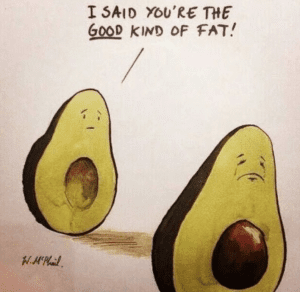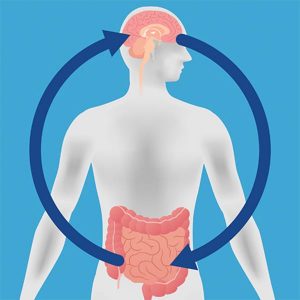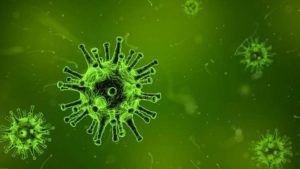Understanding the Gut and God-Made Food
Today’s Teaching Video from Keiran Llaneza, P.A.:
Homework:
Consider how healthy or not your gut might be? How many of the 10 Probiotic killers are your guilty of? Are you primarily eating foods that are supporting a healthy gut? Are there any foods you realize give you symptoms of gut issues listed in this teaching topic?
Teaching:
Gut 101
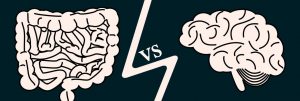
The Gut is referred to as the “second brain” due to brain-gut axis allowing for biochemical signaling between the Gastrointestinal system and Central Nervous System. This is connected via the Vagus nerve.
- The gastrointestinal system comprises 80% of the body’s immune system.
- 90% of our serotonin “happy chemical” production occurs in the gut…and serotonin heavily affects the bowels.
- There are more neurons in the small intestine than in the entire spinal cord.
- It is the only system in the body that has its own, independently operating nervous system, called the enteric nervous system, also known as the second brain.
- If you stretch out the gastrointestinal system in its entirety, it would have the surface area of a regulation sized singles tennis court (22ft. long).
- There are between 400 and 1,000 species of microbes living in your gut, totaling over 1-2 pounds of mass and containing more bacteria than there are known stars in the sky.
Many know about the gut-brain connection, but what they don’t realize is that it’s bi-directional.
When you break it down, you’ve got the autonomic nervous system, which really houses the parasympathetic and sympathetic aspects of the nervous system. And the biggest nerve involved in all of that is the vagus nerve. It’s the longest nerve in the body. And it directly connects the gut to the brain. In the middle, it connects to the heart, and the lungs, and all kinds of other areas, too, because it has to trigger all of these physiological responses based on what’s happening in the environment around you. And what’s interesting about the vagus nerve is that it connects directly to the enteric nervous system, which is the nervous system that covers the entire lining of the gut. And the enteric nervous system has the second most nerve endings in the body, next to the brain. It has even more nerve endings than the spinal cord. So it’s a very, very, elaborate neurological system that provides direct access to the brain, itself, through the vagus nerve. And the microbes in your gut have full access to it. So they have autonomous access to it, meaning outside of our own control in many ways.
The microbiome is interesting in that there are products of the microbiome that we can only get from the microbiome that have a real significant effect on the balancing between those two systems. One of them is short-chain fatty acids. These short-chain fatty acids have a profound role on balancing metabolism and balancing sympathetic and parasympathetic activities.
One of the ways your microbiome triggers that is when the food enters into the digestive tract. They metabolize portions of the food and they produce these short-chain fatty acids. The short-chain fatty acids are released from the gut into the circulation and then they go trigger parts of the brain that create a parasympathetic state. They help you actually turn on that resting state. And that’s all from signals from the microbiome.
Gut bacteria imbalance, “Dysbiosis”:
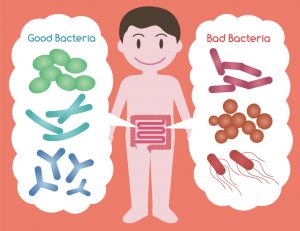
Dysbiosis (also called dysbacteriosis) is a term for a microbial imbalance. A good gut microbial balance is about 85% Good and 15% Bad.
So what tends to happen, when you’re stressed, is you release all those hormones. The hormones then create dysbiosis in the gut. So it increases the presence of certain pathogens, which then, of course, cause you to release more hormones and starts causing inflammation in the lining of the gut.
When inflammation in the lining of the gut happens, the tight junctions in the lining of the gut open up. Now, your gut is permeable and you get constant leaking in of a profound toxin called lipopolysaccharides. This is a bacterial-derived toxin that exists in the gut. When it’s in the intestine is fine, but if it’s allowed to leak through, and into the circulation, it becomes a significant issue. And it’s very common. It then becomes the foundation for the vast majority of chronic illnesses that we have.
The negative effects LPS can have on our body are:
- Impact brain function
- Lower dopamine levels “motivation and willpower” vs depression
- Lower serotonin levels – associated with depression
- Can damage the hippocampus (converts short term to long term memory) and amygdala
- Gastrointestinal system
- Leaky Gut/Gastro impermeability, including bacterial, yeast and/ or fungal overgrowth
- Decrease villi in the intestines = decreased absorption of vitamins and minerals
- Thyroid – affects metabolic rate
- Lower TSH (stimulates thyroid to make thyroid hormone
- T4 inactive thyroid hormone which converts to T3 which is active
- Receptors affected – Blocks getting the hormone into the cells
- Kidneys
- Decreases excretion of chemicals that aid in the removal of toxins and waste.
- Increases the hormone Ghrelin (associated with hunger) – increases hunger/appetite
- Decreases the hormone Leptin (associated with satiety or feeling full) – inability to feel full
- Decreases your ability to detoxify substances
- Increases cortisol levels from adrenal glands
- Decrease zinc absorption – which in turn affects the production of hormones like testosterone; also zinc plays a role in quality sleep
- Increases inflammation
- Increases oxidative stress
- Damage to Mitochondria – where ATP (your energy) is produced.
Stress-induced dysbiosis leads to stress-induced leaky gut, which then becomes the foundation for clinical depression, for age-related disorders like Alzheimer’s and Parkinson’s, heart disease, diabetes, hypertension, cancers, all of these things.
These affected areas are just stepping stones to a list of diseases, disorders, and struggles we see in today’s world, such as:
- Diabetes – cancer
- Depression – fatigue
- thyroid dysfunction – obesity
- Toxicity – arthritis
- high blood pressure – fatty liver disease
And these are viruses, too. Like cytomegalovirus virus, Epstein-Barr virus, Herpes virus. These are viruses that exist in us forever—we can’t get rid of them. We know that people who have oral herpes when they’re stressed have a cold sore pop up, right? In the winter months when people are getting less vitamin D, and their immune system’s compromised, they’re more stressed from the cold and so on, so a cold sore pops up.
Most viruses sense a compromised state through the production and circulation of stress hormones. Epstein-Barr virus, streptococcus, prevotella are all of these types of opportunistic bacteria and viruses. They sit around, and they keep their numbers fairly low so the immune system doesn’t detect them and cause problems for them. And then the moment they detect the cortisol, epinephrine, and norepinephrine is high, then they go, “Hey, guys, this is our time. This system is weak. Let’s do what we do.” And then they multiply quickly, releasing all the toxins. So our own behavior, our inability to deal with stress, and not working on simple mindfulness work will give them the opportunity to be pathogenic.
Signs of Gut Issues:
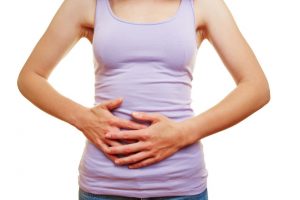
Our gastrointestinal systems do not have a pain sensing system. As a result, we typically don’t know when our gastrointestinal systems have a problem. Instead we have to wait until things get bad enough to present symptoms to us. Kinda like hydration; if you feel thirsty you’re WAY behind. Here’s a list of some typical symptoms:
- gas
- bloating
- heartburn
- burping after meals
- food sensitivities- no longer tolerating foods you were able to eat in the past.
- inadequate digestion/ undigested food in your stools.
- foul smelling stools
- constipation
- diarrhea
- burning in the stomach
- bad breath
- nausea
A balanced microbiome is responsible for:
- Producing vitamin B-12, butyrate and vitamin K2
- Crowding out bad bacteria, yeast and fungi
- Creating enzymes that destroy harmful bacteria
- Stimulating secretion of IgA (antibody crucial for immune function) and regulatory T Cells.
Top Probiotic Killers:
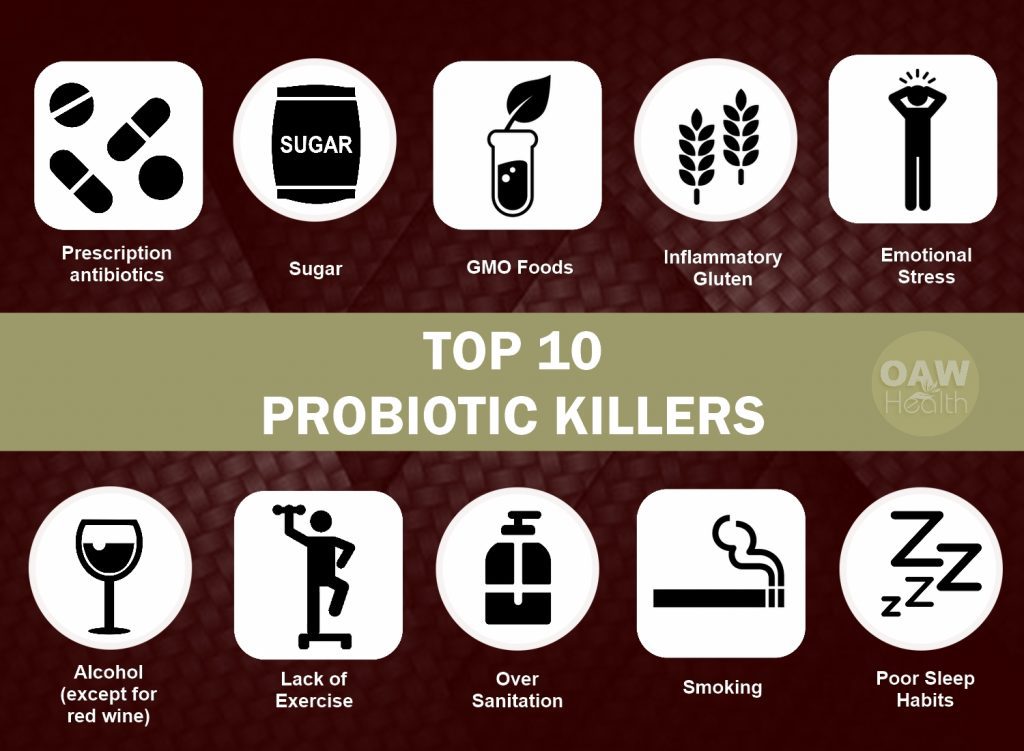
Foods rich in Probiotics:
- Apple Cider Vinegar
- UNsweetened Yogurt and Kefir (Non-Dairy options: almond, cashew & coconut)
- Miso
- Raw Cheese, such as those from goat’s milk, sheep’s milk, and A2 cow’s milk.
- Fermented foods, such as: Kimchi, Kombucha and Sauerkraut
Probiotic Supplements:
- Refrigerated is always best, higher quality, live culture.
- You get what you pay for with these.
- 50 Billion, 100 Billion and even 150 Billion CFUs (colony formulating unit) are appropriate for your daily health.
- Build up over time – start with 50 billion
- Normal to feel a little off the first week of taking one/upping your CFU number
THE BEST WAY WE CAN BUILD A HAPPY HEALTHY GUT IS FOOD!

Food is Medicine: “Let food be thy medicine and medicine thy food.” ~Hippocrates
Epigenetics: the study of changes in organisms caused by modification of gene expression rather than alteration of the genetic code itself.
Certain anti-inflammatory foods contain powerful active ingredients that help control how your genes are expressed. Most genes are not static, and we have now begun to understand that they change and alter their function much more rapidly and dynamically than we did previously thought possible. If you change your habits or diet your body will turn various genes on or off to adapt to the change, and sometimes these changes will be passed on to your offspring.
“Recent medical breakthroughs have radically changed our understanding of aging and disease by showing that the brain changes leading to dementia unfold over decades, 20-40 years, before anyone forgets a name or loses their keys.” -Lisa Masconi, PhD author of “Brain Food”
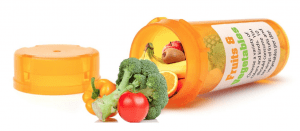
FACT: Unhealthy diet contributes to approximately 678,000 deaths each year in the U.S. due to nutrition- and obesity- related diseases such as heart disease, cancer and type 2 diabetes. In the same study, Tobacco related deaths were fewer, 497,437.
-Institute for Health Metrics and Evaluation (IHME) vizhubhealthdata.org
The Right foods can….
- Provide nutrients – Heal the gut
- Keep our hormones balanced – Lower cholesterol
- Prevent plaque build up in the arteries – Build up the immune system
- Increase brain function – Boost immune system
- Lower/keep blood sugar down – Increase energy
- Prevent inflammation
- Regulating cardiovascular health (including blood pressure and cholesterol levels)
- Helping the digestive organs to process and eliminate waste
The Wrong foods can…
- Spike Cortisol, leading down a chain of further reactions
- Erode the digestive system, leading down a chain of further reactions
- Build bad bacteria, leading down a chain of further reactions
- Create inflammation, leading down a chain of further reactions
- Effect brain health, leading down a chain of further reactions
- Spike blood sugar, leading down a chain of further reactions
- Elevate cholesterol, leading down a chain of further reactions
- Stress specific organs, leading down a chain of further reactions
- Create powerful addictions, leading down a chain of further reactions
- Affect our ability to focus and sit still
Food Allergies
Food sensitivities or allergies can cause anything from pain to brain fog, depression, fatigue, insomnia, etc. A food allergy can cause all sorts of inflammatory reactions. Food is introducing the world to our body.
https://www.elisaact.com/
The Elisa test is the best food sensitivity test because it’s a delayed test. All the other tests measure immediate response…which is not the complete truth of the body. Food allergies can take up to 72 hours to see a response.
Furthermore, it’s not so much the food, but our response to the food and so much of that has to do with digestion. Our skins, bones, hair, cells, etc. over time are a reflection of the foods we eat. After age 35, the body really starts to break down and struggle more with gerd, acid reflux, malabsorption, etc.
A big piece of this is that over time we’ve depleted our natural enzymes. Fruits and vegetables have enzymes in them because they were alive at one time. So when you’re eating those, it spares your pancreas the challenge of working so hard to break those down. When you start to eat a lot of processed food, you deplete your stomach acid as well as deplete your pancreatic enzymes….so then you develop the symptoms of all these issues. You’re not taking in the foods that turn into the chemicals that the body needs to operate correctly.
Our goals with eating are:
- Keep our gut healthy – Balance hormones – Prevent inflammation
- Get Nutrients
- Fuel
We need to be thinking this every time we go to put something in our mouth. Is this helping or hurting me?
Awesome, now what the heck to I eat to accomplish this?
The 3 Macronutrients:

Carbohydrates:
They generate INSULIN, driving energy to the muscles. Insulin is a STORAGE hormone. Too many simple carbs and the body uses Sugar created by the carbs for easy energy burn instead of fat. Result? Little fat is utilized and thus burned, causing cravings for more sugar to feel satiated and so begins a vicious cycle of overeating and weight gain. Not all carbs are bad…it’s simple carbs that are bad and COMPLEX carbs that are our friends.
- Simple Carbs vs. Complex:
Simple Carbs consist of mostly sugar which is burdensome to the body and a precursor to diabetes. Example of simple carbs are real simple- it’s sugar, such as: raw and brown sugars, corn, high fructose corn syrup, fruit juice, soda, cereal, packaged foods and any ingredient ending in -ose (glucose, fructose and sucrose).
Complex Carbs consist of more fiber and starch than sugar which means they pack more nutrients, digest more slowly and are thus more filling. They help manage blood sugar which makes them ideal for people with Type 2 Diabetes. Examples of “good” carbs: fruits in whole form, veggies, nuts/ seeds and whole grains (not processed).
Protein:
The hormone Glucagon, a mobilization hormone and uses stored and consumed energy. The body takes time to break down Protein, allowing you to feel full longer. Any of a class of nitrogenous organic compounds that consist of large molecules composed of one or more long chains of amino acids and are an essential part of all living organisms, especially as structural components of body tissues such as muscle, hair, collagen, etc., and as enzymes and antibodies.
Fat:
Your body depends upon what you eat, to convert it into energy. The “right” sources of fat burn longer and higher. Less Carbs, More Fat => Efficient Burn. Examples of good fat: avocado, nuts/ seeds, and healthy oils, such as avocado, coconut, and extra virgin olive oil. NOT: dairy, fried foods, or packaged foods.
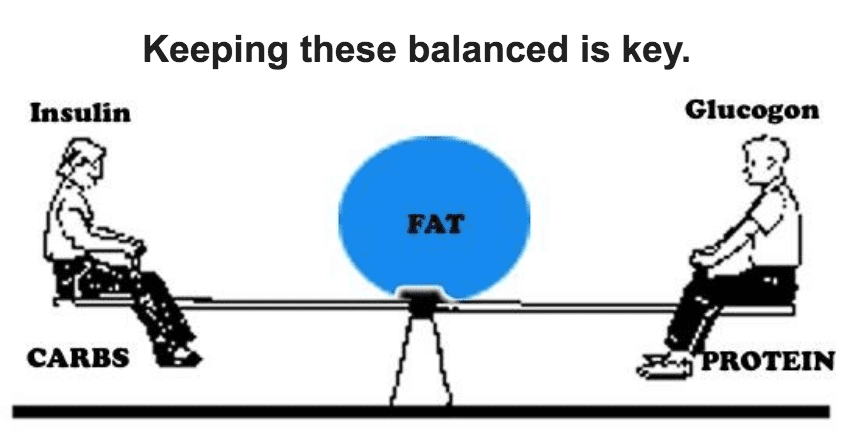
Let’s take a deeper look into each of these 3 categories of food:
Carbohydrates – Fruits & Veggies
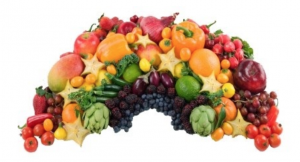
There’s value in color and variety.
In season is smart.
Organic is great.
Superfoods are super.
Consider the glycemic index.
Be aware of nightshades.
RED, BLUE & PURPLE
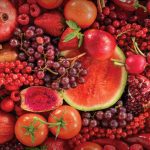
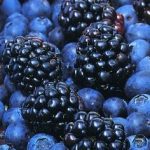
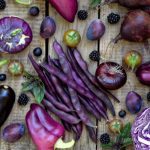
Good sources of:
- Lycopene
- Anthocyanins
- Calcium
- Vitamin D
- Flavonoids
- Resveratrol
- Vitamin C
- Folates
- Vitamin A
- Quercetin
Helps with:
- Lower risk for Heart Disease
- Lower risk for Cancer
- Lower risk for Macular Degeneration
- Limits Damage to Cells Caused by Free Radicals
- Reduce tumor growth and cancer and stroke risk
- Promotes memory function,
- Promotes healthy aging
- Promotes prostate health
WHITE
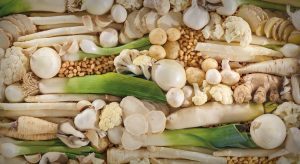
Good Source of:
- Potassium
- Vitamin C
- Folate
- Niacin
- Allicin
- Riboflavin
- Allyl Sulfides
- Glutathione
Helps with:
- Lowers risk for Heart Disease
- Lowers risk for Cancer
- Maintain cholesterol levels
ORANGE & YELLOW
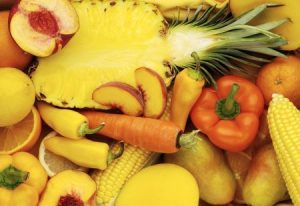
Good Source of:
- Alpha-Carotene
- Beta-Carotene
- Vitamin A
- Vitamin C
- Folate
- Vitamin A
- Zinc
Helps with:
- Immune Function
- Lower Risk for Heart Disease
- Lower Risk for Vision Problems
- Lower Risk for Cancer
GREEN

Good Sources of:
- Lutein Glucosinolates
- Folate
- Isothiocyanates
- Vitamin K
- Folic acid
- Potassium
- Chlorophyll
- Vitamin A
- Vitamin C
- Zinc
- Quercetin
- Glutathione
Helps with:
- Lower Cancer Risk
- Prevent macular degeneration
- Boost immune system
- Maintain healthy bones and teeth

Night Shades:
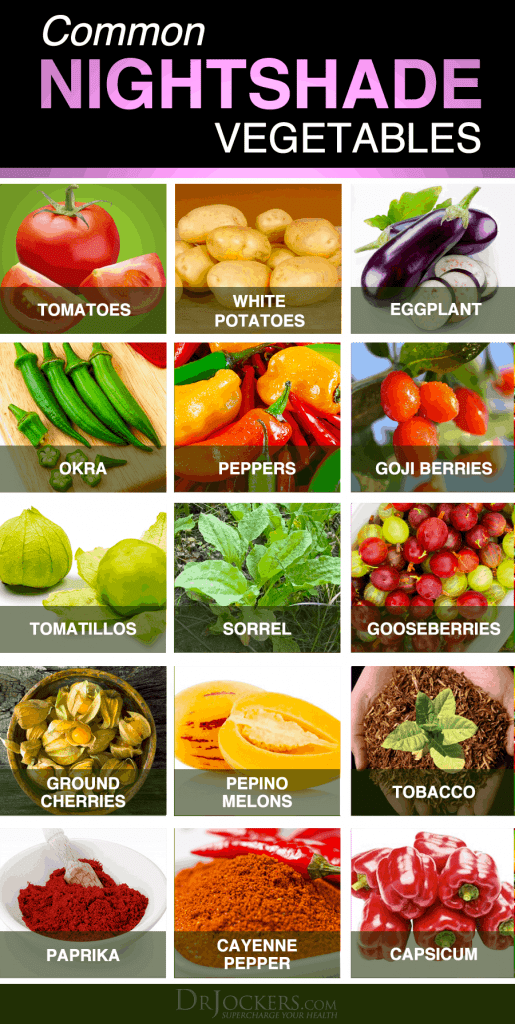
Members of the family Solanaceae, common nightshades include white (but not sweet) potatoes, eggplant, tomatoes, and peppers, both the eye-watering chilies and the sweeter bell peppers. The list of edible nightshade plants also includes any spices made from peppers, like paprika, red pepper flakes, and cayenne pepper (although black pepper is a different plant)
Nightshades can be tricky so pay attention to how your body responds to them; while most healthy microbiomes can tolerate these foods, those with any type of gut dysbiosis or GI conditions may not tolerate them well at all. Interestingly, people with A blood types tend to have a propensity for issues with nightshades.
People who are allergic or sensitive to the alkaloids in nightshades may experience one or more of the following symptoms after eating vegetables from the nightshade family:
- Heartburn ● Inflammation
- Nausea ● hives/ rash/ itchiness /dry skin
- Vomiting ● achy muscles and joints
- excessive mucus production
Organic:
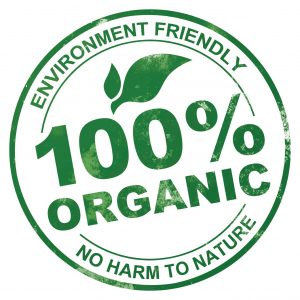
If you see the “USDA Organic” or “Certified Organic” seal on your food, the item must have an ingredients list and the contents should be 95% or more certified organic.
Meaning free of synthetic additives like:
- Pesticides
- chemical fertilizers
- Dyes
- must not be processed using industrial solvents, irradiation, or genetic engineering
The remaining 5% may only be foods or processed with additives on an approved list.
The Dirty Dozen/Clean 15 are lists that come out each year with the top 12 to always buy organic and the 15 that you don’t need to waste the extra money on and buy “organic”.
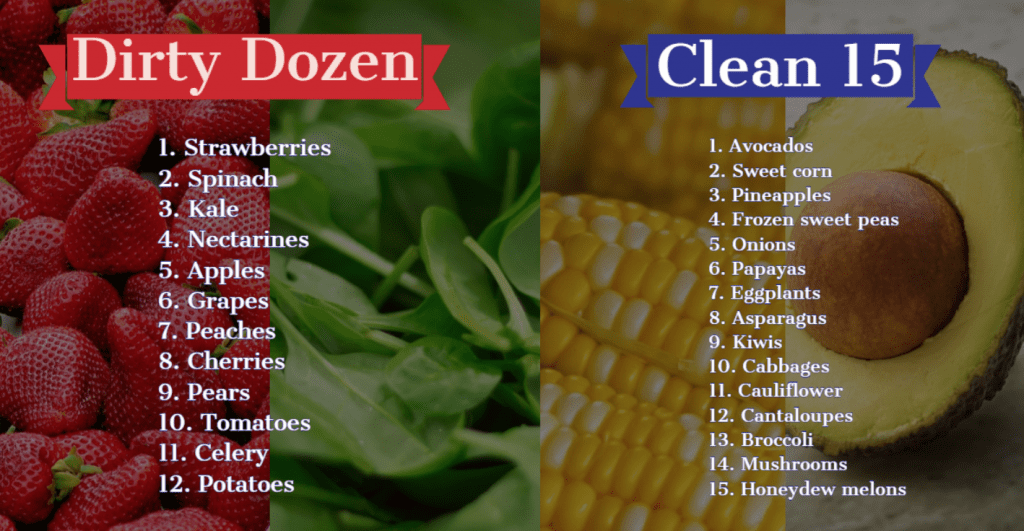
Superfoods:
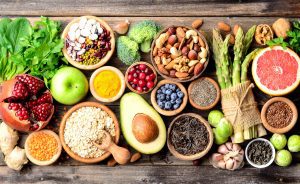
They’re literally what they say they are – these are super awesome foods nutritionally. Here’s why:
- These nutrient powerhouses pack large doses of antioxidants, vitamins, minerals and polyphenols
- Able to help your body defeat the evil Metabolic Syndrome
- Able to Lower Blood Pressure AND Crush Bad Cholesterol
- Able to Help Good Cholesterol
Fat:
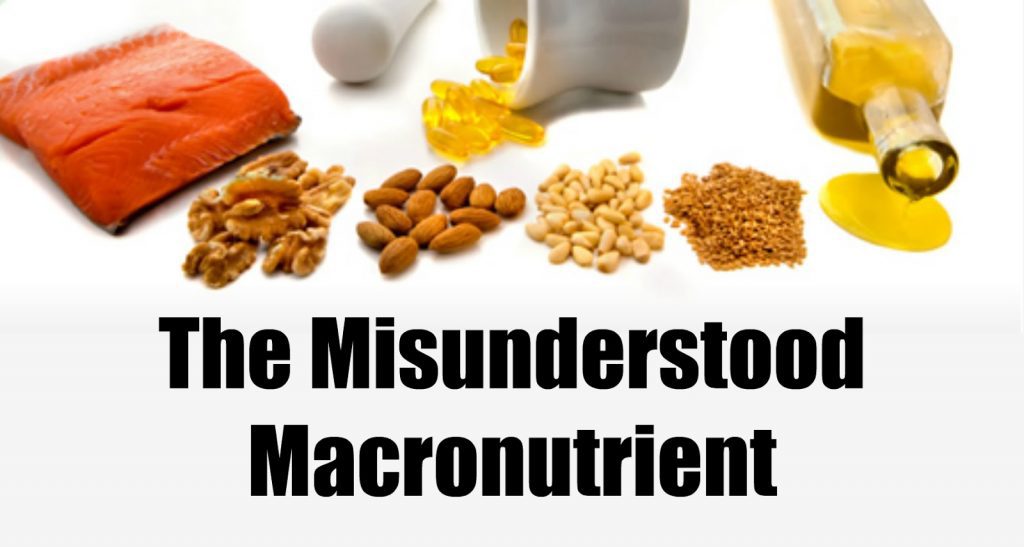
What is Fat?
- Molecules triesters of glycerol (triglycerides) and fatty acids
- One of the three macronutrients
- Vital for body processes such as digestion, transport, conversion, and energy extraction
- Primary source for stored energy
- Contains three times the amount of energy provided by glucose which must be provided to the brain in a continuous supply throughout the day
- Needed for your hormones to be made and directed to their proper locations throughout the body
- Lipid molecule cholesterol is a key part of the plasma membrane, a coating that wraps around every cell in the human body
#FatFacts:
- At the same weight, Fat takes up more space in your body than muscle.
- Fat burns less calories than muscle.
- Each extra pound of Fat requires 1 more mile of blood vessels in your body
- 80% of your brain matter consists of fats that actually manufacture all the cell membranes in your body.
Why Fat?
- Digestion/Satiation – Fat is not soluble in blood, so bile acids produced from cholesterol in the liver emulsify it along the way to make it bioavailable. It stores the fat soluble vitamins A, D, E, and K in the liver and fatty tissues. Because fat needs to be broken down through multiple processes that include the stomach, duodenum, liver, gallbladder, pancreas, and small intestine, it stays around for a long time and keeps you satiated.
- Transport – Fat is part of every cell membrane in the body. It helps transport nutrients and metabolites across cell membranes.
- Conversion – Your body utilizes fat for everything from activating hormones to building immune function.
- Energy extraction – Between meals or when glucose is not available, triglycerides are broken down and metabolized for energy, which in times of great need, the brain’s neurons can utilize.
- Nervous system – The axon is the part of a nerve (neuron) that transmits electrical signals from the brain throughout the body to initiate all functions. The axon’s protective coating is the myelin sheath and is made of 80% lipids (fats) that must be provided by the diet.
3 Types of Fat:
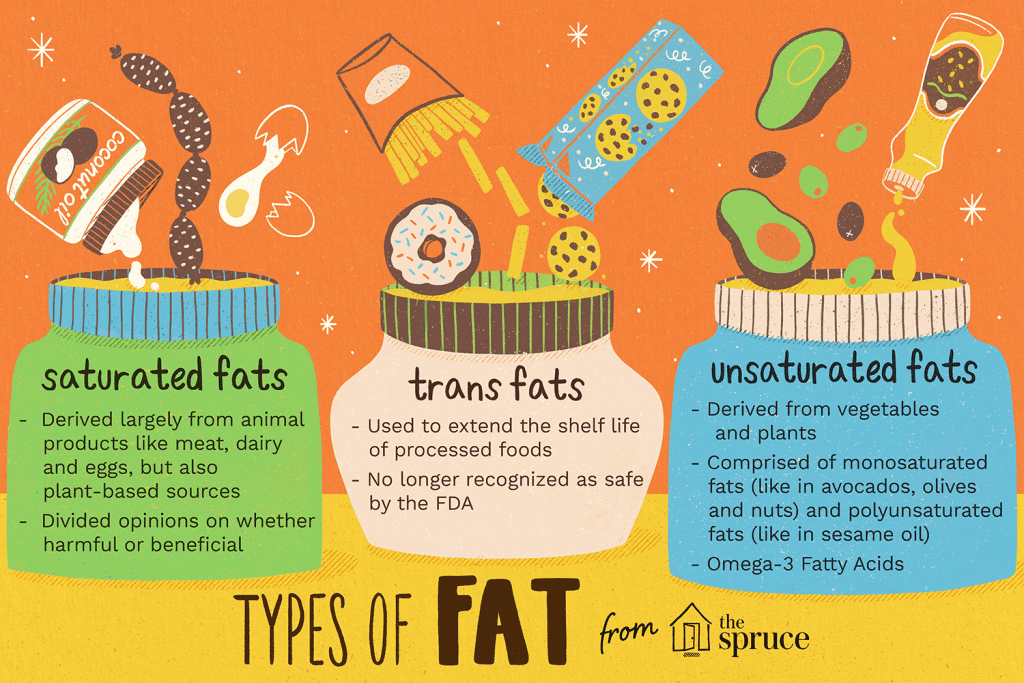
- Mono/Poly – UnSaturated Fat
- Improves blood cholesterol levels, eases inflammation, stabilizes heart rhythms, regulates blood sugar
- Mono-Examples: olive, safflower, sunflower, peanut oils; avocados, almonds, pecans, sesame & pumpkin seeds, too. (Omega 9)
- Poly-Examples: fatty fish, ground flaxseed & walnuts. (Omega 3)
- Saturated Fat
- Good for: Improving cardiovascular risk factors, Stronger bones, Improved liver health, Healthy lungs, Healthy brain, Proper nerve signaling, Strong immune system
- Higher melting points; tend to be solid at room temperature (eg: Butter)
- Saturated Examples: Full-Fat Dairy, Eggs, Red Meat & Poultry, Palm, Coconut & other Tropical Oils
- Trans-Fat
- Usually created when processing food by turning liquid fat into solid fat, AKA Hydrogenation Raises Cholesterol in a bad way.
- Trans-Examples: Most Fast Foods, Donuts, Commercial Baked Goods/Dessert Products, Snack Foods, “Partially Hydrogenated” & “Hydrogenated” Oils
Protein – Does a Body Good!
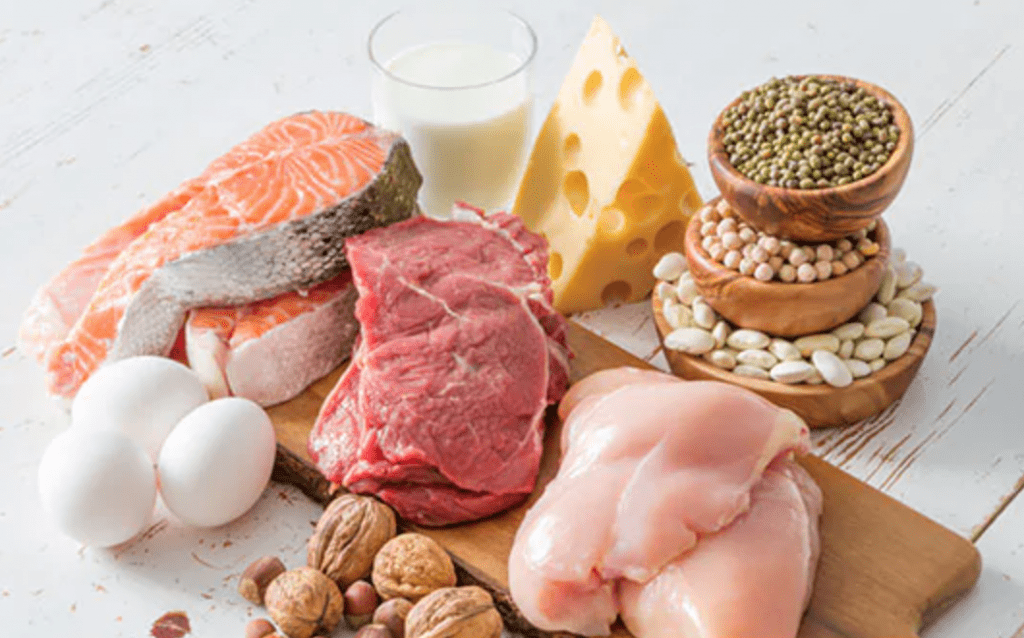
What is Protein?
- Chemically, protein is composed of amino acids, which are organic compounds made of carbon, hydrogen, nitrogen, oxygen or sulfur.
- Protein is something that you must get from your diet. Since your body requires protein from food it is categorized as an essential nutrient.
- Amino acids are the building blocks of proteins, and proteins are the building blocks of muscle mass.
- Your entire body is made up of proteins. For example, cell membranes, muscle, hair, nails and skin, bone, red blood cells and plasma all are loaded with protein. Plasma carries protein particles, called lipoproteins, that take cholesterol throughout and out of the body.
What does protein do for you?
- Your body manufactures enzymes with about half of the daily protein you consume. Enzymes are involved in all sorts of jobs like digestion, dividing molecules to make new chemicals and cells and assembling molecules.
- All of your five senses require proteins for them to function.
- Any specialized cells like muscle cells require nerve cells to send messages by means of neurotransmitters. Proteins are required to make the neurotransmitters you need for all of the message transfers that go on every nanosecond.
- As your body is making new cells, protein is broken down. Each time a new cell is created, protein is used. Even your chromosomes are made up of protein.
- If you don’t get enough protein, muscles cannot be rebuilt or repaired properly, the very cells themselves won’t get the nourishment necessary to function properly.
- Growth can be stunted, the immune system can be compromised and the systems of your body can’t function the way they need to.
Your body contains thousands of different proteins, each with a unique function:
- Some proteins are hormones
- Some proteins provide structure
- Some proteins are antibodies
- Proteins maintain fluid balance
- Proteins transport nutrients and other compounds
- Proteins maintain acid-base balance
- Protein is a back-up source of energy
Quality before Quantity:
Beef: Grass-Fed vs. Grain-Fed

- Grass-fed, meaning the cows eat ONLY grass/pasture, which is better than grain fed.
- Grass is what cows were designed to eat and digest, not grains.
- Grass-fed beef contains high levels of Omega-3 fatty acids and CLA, both very beneficial for brain health, which are passed down to the consumer.
- Grain fed is high in Omega 6 which are prevalent in the Standard American Diet and extremely pro-inflammatory.
- However unless it says grass finished this means that there is still the likelihood that the animals were given some sort of hormones or supplements in the last few months of their life. Farmers will do this to plump them up to make a few extra bucks off of the animals.
Fish/Seafood: Farm Raised vs. Wild Caught
- Seafood raised in tanks, enclosures and controlled pens; can develop/contain diseases, toxins, antibiotics, etc.
- Wild caught = This means the fish are caught by fishermen in their natural habitat. They’ll have higher Omega 3 fatty acids, protein; very low levels of disease; free to roam, free from antibiotics, pesticides, etc.
Which came first?

Farm Raised Eggs *Worst
- Commercial factory style enclosures/ pens = more diseases, toxins, artificial dyes, antibiotics, and fat. Recent studies published within the past 5 years demonstrate that the caged hens have increased risk for salmonella contamination than cage-free and pastured operators.
Cage- Free
- Chickens raised in an open commercial space but says very little about how chickens are raised and their conditions. They have at least one square foot of roaming space. This doesn’t mean they aren’t consigned most of their lives, though. In addition, no, their diet isn’t regulated.
Free-Range *CAUTION*
- These chickens are kept under similar conditions as cage-free chickens, except they will have “access” to the outdoors. This does NOT mean Organic and USDA does not specify that hens have access to pastured diet, nor how much time they’re allowed outside and is not “policed”.
Organic *Better*
- Chickens may be kept in any kind of caging system, but eat organic feed and don’t receive vaccines or antibiotics. -This is the only designation that can ensure eggs were NOT treated with antibiotics.
Organic Pastured *Best*
- Most humanely raised, given fresh air and sunshine daily, and contain more quality nutrients from “pasture” diet- more Vitamin A, D, & E, twice the amount of Omega 3’s. (Earth Fare, Whole Foods). You may see Pasture/pasture-raised eggs, poultry, or beef. Pasture-raised animals have access to pasture all year round, but they can be given some grains to supplement their diet.
No Added Hormones:
Yes this label is legitimate, but it’s also misleading. Why? All poultry must be raised without hormones. So whether or not it’s labeled as such, it is.
Collagen:
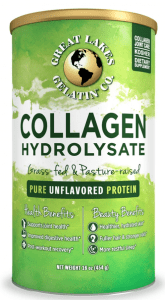
Collagen is a structural protein that acts as a building block for your bones, teeth, muscles, skin, joints and connective tissues. Think of it as the glue that holds your body together. The most abundant protein in the body, collagen makes up more than one-third of your total protein. It’s rich in glycine, proline and hydroxyproline — the amino acids that help your body make new collagen.
- Glycine – the amino acid found at the highest levels in collagen, requires more serine than our bodies can naturally produce. Studies suggest the need for glycine supplementation to achieve ideal metabolic processes
- Proline – a non-essential amino acid synthesized from glycine and important in function of joints and tendons
- Hydroxyproline – amino acid that plays an essential role in the stability of collagen
- Alanine – amino acid used in the biosynthesis of proteins
Good dietary sources of collagen include:
- Bone broth
- Pork, salmon and chicken skins
- Non-muscle meats like tendon, tripe, oxtail and knuckle
- Egg yolk and eggshell membranes
LET’S FACE IT, WHO’S REALLY GOING TO EAT THESE ON A REGULAR BASIS…….
At least 28 different types of collagen exist, but types I, II and III form the bulk — between 80 and 90 percent — of the collagen in your body.
Collagen Type 1:
- The most abundant collagen in the human body!
- It is present in scar tissue, tendons, skin, arterial walls, cornea, surrounds muscle fibers, fibrocartilage, intervertebral disks, and bones and teeth.
- Its use is important in improving muscle, eye, skin, cardiovascular, bone, wound, and back health.
Collagen Type 2:
- Found in joint cartilage, intervertebral disks, and the vitreous body of the eye.
- Important in improving joint, back, and eye health.
Collagen Type 3:
- The second most abundant type of collagen in the human body.
- Found in the intestinal walls, reticular fibers, uterus, muscles, blood vessels, & combined with Type 1.
- Important in improving digestive, uterine, muscle, and cardiovascular health.
Collagen for the Gut:
Glutamine, one of the amino acids in collagen, has been identified as the key amino acid for preventing inflammation of the gut wall and healing leaky gut syndrome.
Vegetarian Protein Options:
*Keep in mind, when removing meat completely from diet there will certain vitamins and minerals missed, so supplementation will be necessary.
Nuts and Seeds – Predominately HEMP seeds
Some veggies like broccoli, spinach, asparagus, artichoke, sweet potatoes and Brussels sprouts
Some beans like peas, garbanzo beans and lentils.
Healthy Food Listings Broken Out

Furthered Learning Articles On Today’s Topics:
https://www.carlagoldenwellness.com/2015/06/15/is-the-brain-fueled-by-fat-protein-or-carbs/
https://www.amymyersmd.com/2014/05/a-healthy-gut-means-a-healthy-brain/
https://draxe.com/what-are-superfoods/
https://paleoleap.com/nightshades/
https://www.perfectketo.com/good-fats-vs-bad-fats-on-the-ketogenic-diet/
http://blog.paleoonthego.com/good-fats-vs-bad-fats-our-guide-to-paleo-fats/
https://www.stupideasypaleo.com/2014/03/06/healthy-fats-vs-unhealthy-fats/
https://robbwolf.com/2016/11/07/how-much-protein-do-we-really-need/
http://alsearsmd.com/glycemic-index/
https://paleoleap.com/paleo-and-protein/
Mind-blowing Movies on food:
http://onlygrassfed.com/the-daily-beef/269-five-movies-that-will-make-you-a-smarter-meat-eater.html
